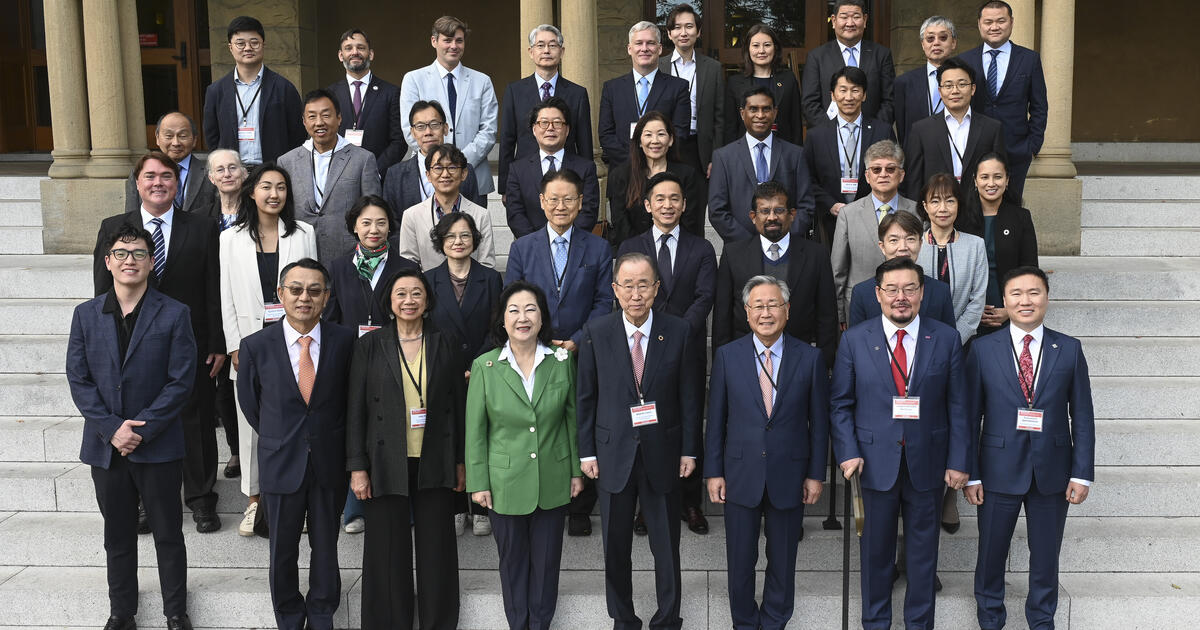The Second Plenary Session: Climate Change Diplomacy

The second plenary session focused on climate change diplomacy and was sponsored by the Ministry of Foreign Affairs of the Republic of Korea. Chan-Woo Kim, the former Ambassador for Climate Change of the Republic of Korea, discussed the necessity of international collaboration on climate initiatives. Erdenebold Sukhbaatar from the Mongolian Parliament addressed the intersection of climate change and national policy, while Dave H. Kim from the Global Green Growth Institute provided insights into innovative approaches to climate diplomacy.
The Next Plenary Session: Resilient Infrastructure and Sustainable Industrialization
The next plenary session focused on resilient infrastructure and sustainable industrialization and was organized by the Fijian Competition and Consumer Commission. Panelists included Joel Abraham, CEO of the Fijian Competition and Consumer Commission; Lorraine H. Akiba, President and CEO of LHA Ventures; and Diana Bowman, a Professor from Arizona State University. Together, they explored the challenges and opportunities in enhancing infrastructure in the Indo-Pacific, focusing on sustainable practices that promote economic growth and resilience.
The Fourth Plenary Session: Energy Infrastructure Financing
Organized by the Asian Development Bank (ADB), the fourth plenary session investigated energy infrastructure financing as the discussion centered on increasing access to financial services for small-scale industries in developing countries, emphasizing the need for innovative financing solutions to support energy infrastructure. The panel included Rie Hiraoka, a Visiting Scholar at Shorenstein APARC; Sulakshana Jayawardena, former Secretary of the Ministry of Power and Energy in Sri Lanka; Kee-Yung Nam, Principal Energy Economist at ADB; and R. Duncan McIntosh, Senior Regional Maritime Specialist at ADB.
Generating Momentum Through Collaboration
On the second day of the conference, expert panels and a series of emerging leaders workshops facilitated opportunities for scholars, practitioners, and professionals to exchange ideas and share expertise. Discussions centered around emerging green technologies, and the economic and political innovations needed to facilitate sustainable industrialization.
Kim Sook, the Executive Director of the Ban Ki-moon Foundation for a Better Future and former Ambassador of the Republic of Korea to the United Nations, set a collaborative tone for the day’s sessions focused on actionable insights in his opening remarks. According to Ambassador Kim, “SDG 9 represents a fundamental pillar of the global development framework, it will promote economic growth, social progress, and environmental sustainability, but it is not a standalone goal, it touches almost every aspect of society and the economy and is ultimately linked to the success of the entire 2030 agenda for sustainable development.”
The first expert panel examined ways of leveraging the high-tech and finance ecosystems to improve access to technology, particularly in developing countries. Panelists, including Jeep Kline, Managing Partner and Founder of Raisewell Ventures, David Suh, Managing Director of Samsung Ventures, and former Minister of Trade of Indonesia Gita Wirjawan identified paradoxes and barriers that impede electrification and further investment in sustainable infrastructure and industrial innovation.
SDGs, Targets, and Indicators
| SDGs | Targets | Indicators |
|---|---|---|
| SDG 9: Industry, Innovation, and Infrastructure | Target 9.1: Develop quality, reliable, sustainable, and resilient infrastructure | Indicator not mentioned in the article |
| SDG 7: Affordable and Clean Energy | Target 7.1: Ensure universal access to affordable, reliable, and modern energy services | Indicator not mentioned in the article |
| SDG 13: Climate Action | Target 13.1: Strengthen resilience and adaptive capacity to climate-related hazards | Indicator not mentioned in the article |
1. Which SDGs are addressed or connected to the issues highlighted in the article?
SDG 9: Industry, Innovation, and Infrastructure
The article discusses the challenges and opportunities in enhancing infrastructure in the Indo-Pacific region. It mentions the need for sustainable practices that promote economic growth and resilience, which aligns with SDG 9’s focus on developing quality, reliable, sustainable, and resilient infrastructure.
SDG 7: Affordable and Clean Energy
The article also touches on the topic of energy infrastructure financing and the need for innovative financing solutions to support energy infrastructure. This relates to SDG 7’s target of ensuring universal access to affordable, reliable, and modern energy services.
SDG 13: Climate Action
Climate change diplomacy and the intersection of climate change and national policy are discussed in the article. These topics are connected to SDG 13, which aims to strengthen resilience and adaptive capacity to climate-related hazards.
2. What specific targets under those SDGs can be identified based on the article’s content?
Target 9.1: Develop quality, reliable, sustainable, and resilient infrastructure
The article highlights the challenges and opportunities in enhancing infrastructure in the Indo-Pacific region, focusing on sustainable practices that promote economic growth and resilience. This aligns with Target 9.1 of SDG 9.
Target 7.1: Ensure universal access to affordable, reliable, and modern energy services
The article mentions the need for innovative financing solutions to support energy infrastructure and increase access to financial services for small-scale industries in developing countries. This relates to Target 7.1 of SDG 7.
Target 13.1: Strengthen resilience and adaptive capacity to climate-related hazards
The article discusses the necessity of international collaboration on climate initiatives and the intersection of climate change and national policy. These topics are connected to Target 13.1 of SDG 13.
3. Are there any indicators mentioned or implied in the article that can be used to measure progress towards the identified targets?
Unfortunately, the article does not mention or imply any specific indicators that can be used to measure progress towards the identified targets. More detailed information or data would be needed to determine relevant indicators.
Source: aparc.fsi.stanford.edu







